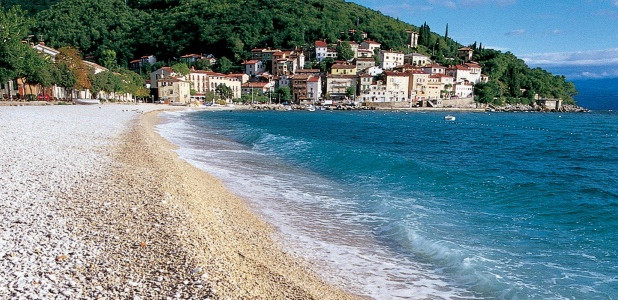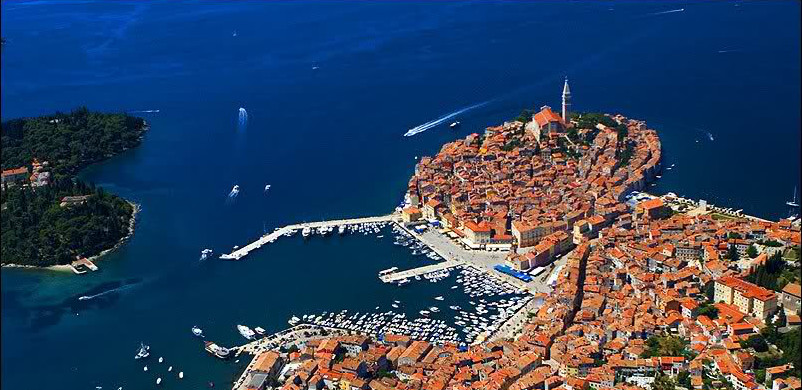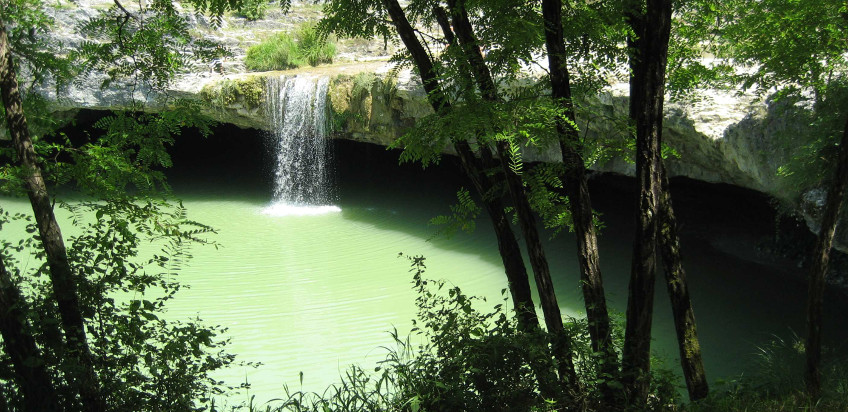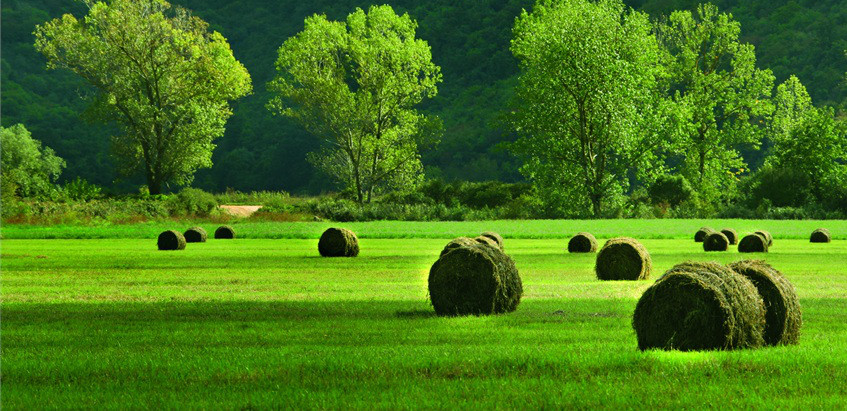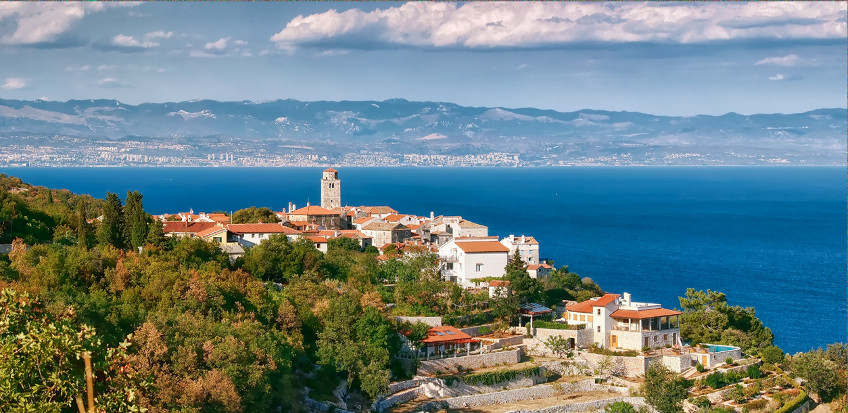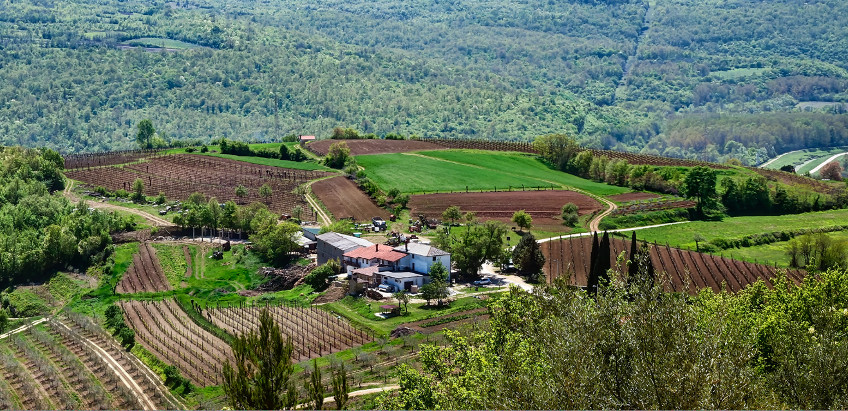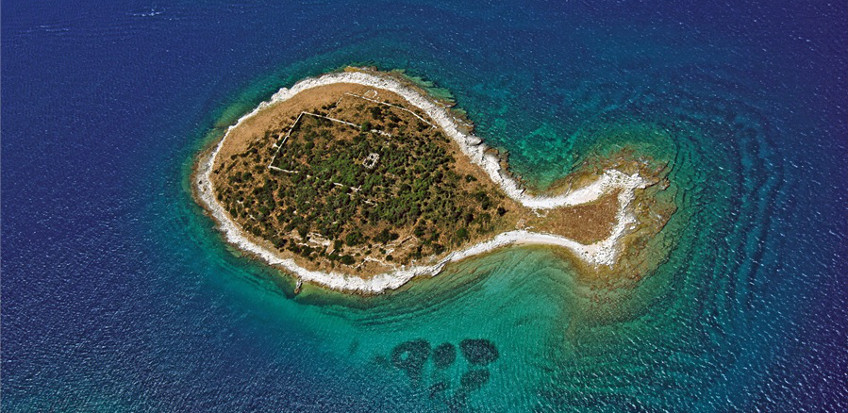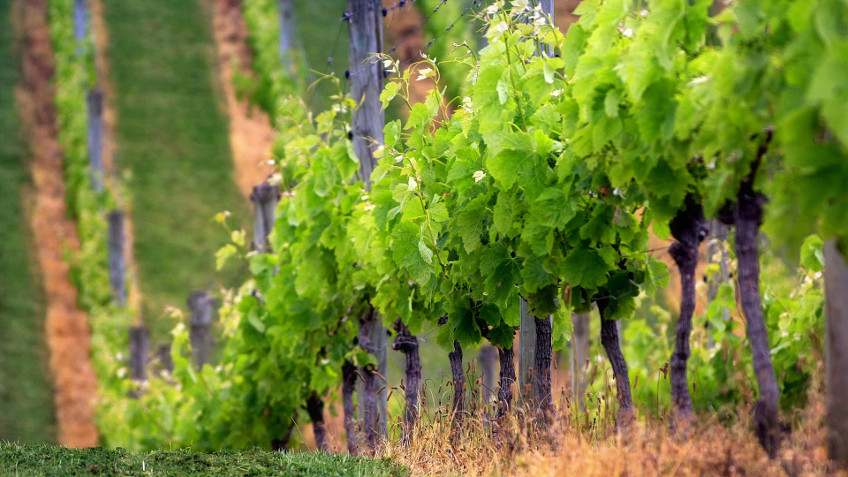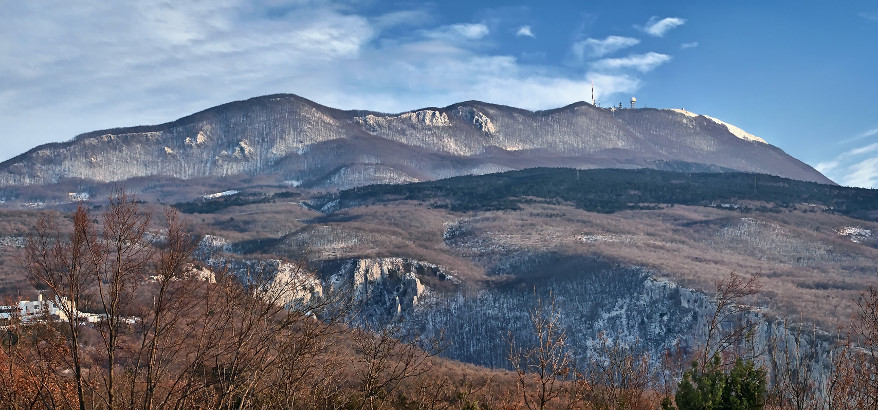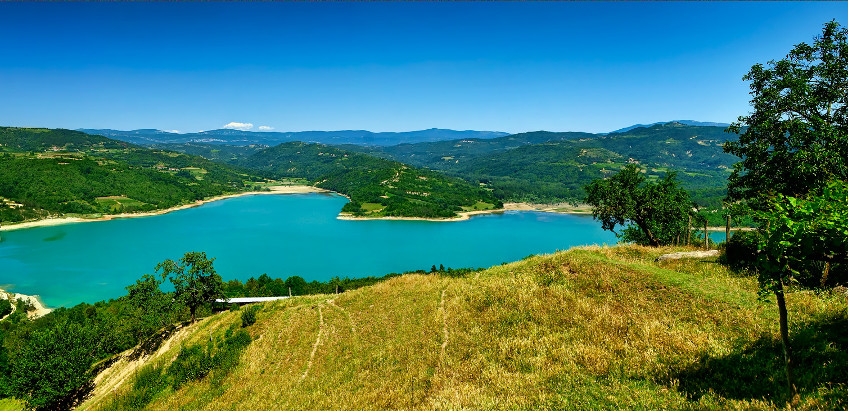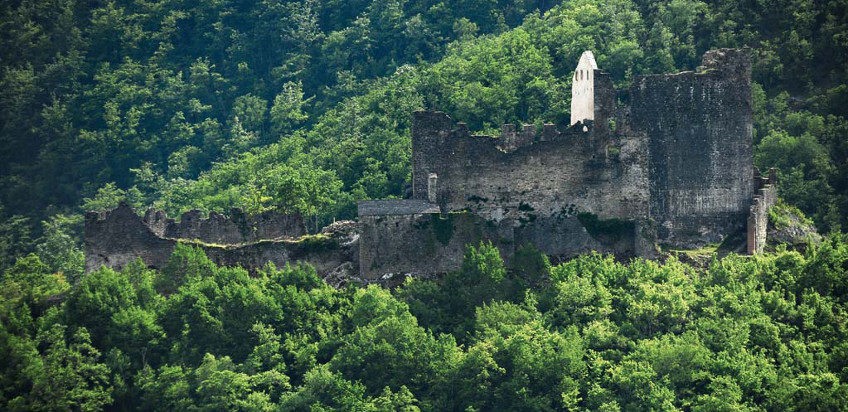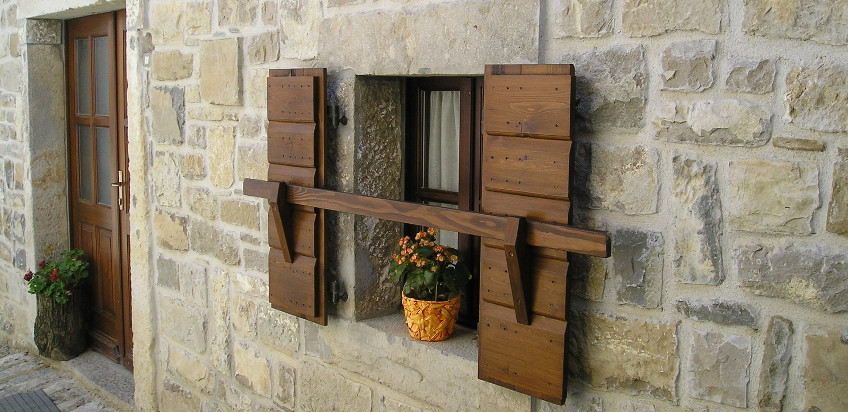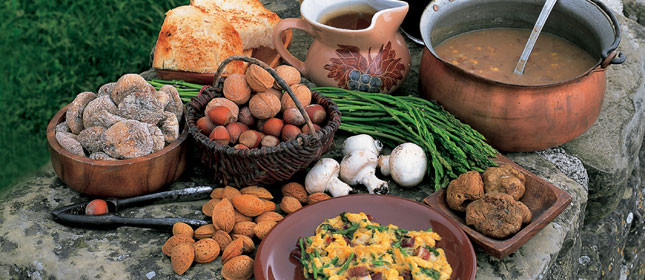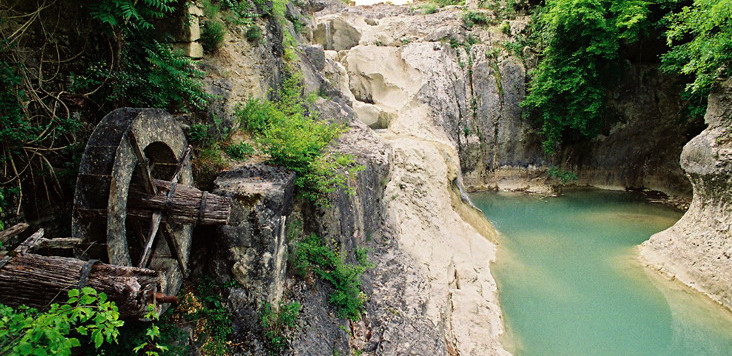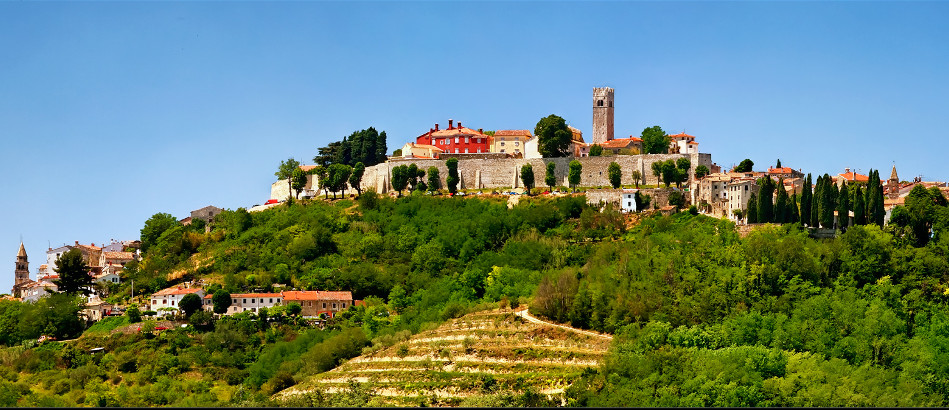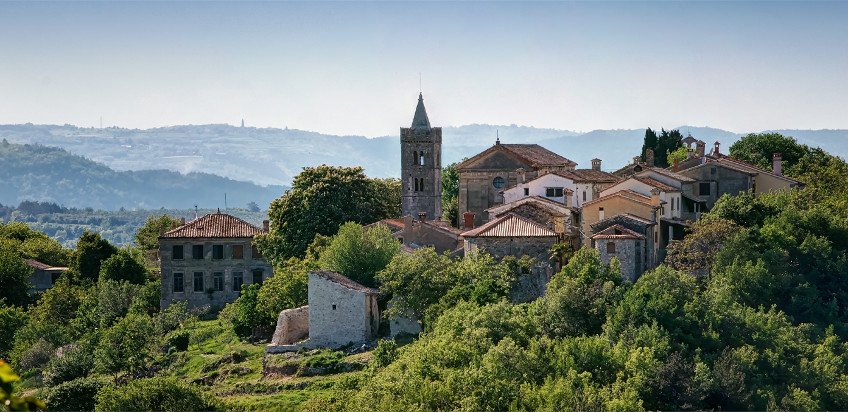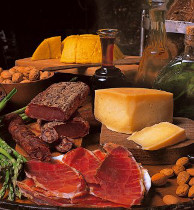
Local food and wines
Istrians are renowned as particularly hospitable people, especially in inland Istria. You may be invited in, for no special reson, for some locally dried ham and a glass of home-made wine or rakija - a grape brandy.
During its turbulent history, various nations came to Istria bringing along their culture, thus influencing the cuisine of the peninsila. These diversities blended and created a uniquue and original cuisine, namely, Istrian.
Eating out tends to take the Italian style of trattoria (locally called konoba) offering you traditional meals, usually in stunning settings.
There are more than 600 restaurants in Istria, quite a feat for such a small region, so the choice is huge.
Recommendation:
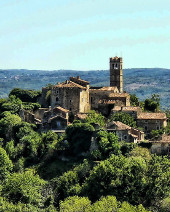
In our vicinity
Whether exploring our surroundings on foot, by bike or by car, you will uncover number of winding roads and paths leading to secret corners of this beautiful landscape: shady forests, creeks, old mills, lone houses and hamlets standing atop hills.
We suggest visiting Hum – said to be the smallest town in the world, an old watermill in Kotli, a medieval castle with beautiful views in Boljun... and all this spiced with delicious food and washed down with best wines in local inns.
Hum - the smallest town in the world
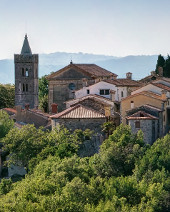
Hum- known as the smallest town in the world- is only 8 km from our house! The legend says that when the giants built the towns in the valley of Mirna river , the small quantity of stones that were left over were just sufficient to build only such a small town. That is the reason why Hum is so small!
Today, with its 20 inhabitants , this charming monument town is a real treasure of medieval architectural and cultural heritage. The appearance of contemporary Hum basically dates back to the 11th century. The whole town was and is still encircled by defence walls and towers.It has all features of a town even though everything is in miniature: a town Gate, a square,two main streets, parish church, town loggia, Municipal Hall.
Under the centennial lime and chestnut trees there is a Table of Mayors. This table was in the past a place of council and public gathering. This is where orders and other announcements were read. This celebration is held till nowadays. Once a year a Mayor is elected by the old procedure, when all the men of the parish vote by making a notch on a wooden stick, called rabos...
Besides the parish Church from the 18th century, there’s the Romanesque Church of St. Jerome from the 12th century, with frescoes painted after the influence of the Byzantine style, with many Glagolitic inscriptions and graffiti imprinted in the church walls.
The gastronomic offer of Hum tavern is widely known. In a typical setting , food is served on wooden trays which gives a touch of originality. It is also a place where you can try Hum’s specialty- biska, the medical brandy made of mistletoe, after a hundred – years- old recipe.
Roč - the cradle of Glagolitic script
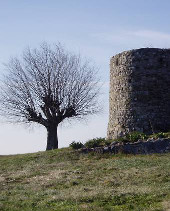
Heading from Hum towards Buzet, a 7 km drive will take you to Roc- another medieval town located on the rocky ridge. It has well preserved city walls with 5 towers, Big and Small city gates, Roman Lapidarium, a loggia and churches with most important Glagolitic inscriptions. As well as Hum, Roc was an important centre of Glagolitic script and Slavistic culture of the time.
Before continuing your journey, stop for lunch in the Roc tavern that serves local Istrian dishes. House specialties include wild asparagus and mushroom omelette, truffle omelette,cow's milk cheese and prosciutto fried in olive oil. Taste the house's trademarks- mistletoe and honey brandies. Near the tavern that used to be a Renaissance residence is a beautiful replica of Guttenberg's printing press. Ask for the key in the tavern and take a closer look at this beautiful masterpiece of handicraft.
Kotli - charming village with an old mill
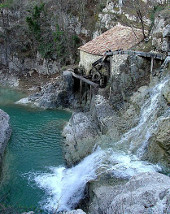
Half way from Hum towards Roc, we recommend you a trip to a picturesque village of Kotli and its old watermill. Turn left at the village of Brnobici and a winding road wll lead you through forests, fields and meadows. And just when you think you lost yourself, here you are, in front of an old stone bridge and aging houses. Kotli is today one of the most attractive and most visited destination of inland Istria.
It used to be a village of farmers and craftsmen, especially known for its tailors and millers. Then, people started to leave the village and it became totally deserted. Only in the last few years houses have begun to be renowned and the life is slowly returning to the village.
The preserved houses witness the former comparative wealth of their owners and are an exceptional example of Istrian rural architecture. The village is famous not only for its architectural value but also for its famous watermill.It's not in use any more but it has been renovated recently. Explore it and take some exceptional pictures. Walk down to the stony river bed, and if the weather is nice and is warm enough you might want to have a swim in the copper-like hollows carved in the stone by the river. These copper-like hollows give the village its name because 'kotli' means 'coppers' in Croatian language.
Just by the river, there is a tavern where you can taste traditional Istrian dishes like stew with gnocchi, lasagna, fuzi (type of hand-made pasta)and from its terrace enjoy the view on the river and the old mill.
Boljun - medieval town on hilltop
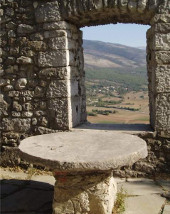
Yet another magical fortified town , only 15 km from our house, on the way from the Učka tunnel towards Labin and Rabac. From its 11th century castle , an impressive view opens on the fertile valley and the slopes of Mt.Učka. The purpose of this position was to guard strategically important routes and this Boljun neither a town nor a village, often paid high price for it, but managed to exist anyway.
It reached the development culmination between 15th and 17th century, when it had its own judges, laws a headman and about 130 families lived in it. Like Hum and Roc, Boljun was one of the centres of Glagolitic literacy. Only about 30 families live in Boljun today.
Besides enjoying in wonderful vistas , you can enjoy the tasty home-made food and wine in the pleasant atmosphere of the Boljun Tavern which is located near the castle entrance.
Pazin - heart of Istria
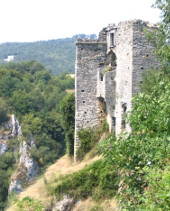
Pazin is the administrative centre od Istrian County . Thanks to its central position within the peninsula and its importance, it is also called “the heart of Istia”. The town developed around the medieval castle which is the biggest and the best preserved medieval fortress in Istria.It was first mentioned in written documents in 983 A.D. and after a long and turbulent history now it houses the Ethnographic Museum and the Museum of Pazin, both worth visiting.
The castle is set on the cliff high above the abyss of Pazin Cave and the stream of Pazincica that ends its flow here and mysteriously disappears into subterranean passages. This natural phenomenon attracts not only nature lovers ,cyclists, climbers and walkers but it also inspired the famous writer Jules Verne . He set a large part of the plot of his novel Mathias Sandorf from 1885, in Pazin, probably having been fascinated by the astonoshing scene. Every year, at the end of July, Jules Verne’s Days are celebrated to highlight the link between the famous writer and Pazin.
In Pazin, you will find shops, banks,restaurants,cafes, a market place, a pharmacy and a tourist office. The biggest traditional Town Fair in Istria, is held here every first Tuesday in month.
Recommendation:
Učka - Nature Park
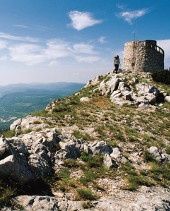
If you are looking to experience one of the most beautiful panoramas in this part of Europe, then you simply must visit Učka Mountain and climb up to its highest peak, Vojak (1401 m) and its stone tower-viewing point. On a clear day, you can see Istria, Kvarner and the central Dalmatian islands, Gorski Kotar, the peaks of the Italian Alps and Venice… You can reach its peak by car or along the numerous hiking trails. Considering that the trails lead you through lovely and botanically valuable beech forests, you will find refreshing shade here in even the hot summer months.
In search of an active outing in nature, visitors will find numerous possibilities for recreation, from light hiking to demanding free climbing or mountaineering . If we add to that many mountain biking trails and the hang gliding and parasailing sites, then the invitation to visit Učka Nature Park will be all the more enticing.
Recommendation:
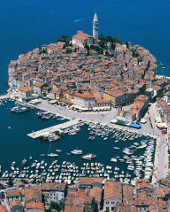
One day trips
Quiet and winding country roads will take you through green and blue scenery of Istria. From oak and pine forest to olive groves, from wheat fields to vineyards and orchards , from hilltop villages to picturesque coastal towns and pebble beaches.. ... Laurel. myrtle, lavender and rosemary lure with their colours and scents.
So, slow down and take pleasures in trips around Istria...
Buzet
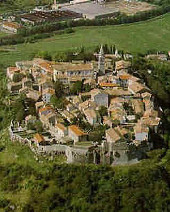
Buzet is situated in the very north of Istria near the border with Slovenia. Its historic core, dating from the Middle Ages lies on a hilltop above a fertile valley of the longest Istrian river – the Mirna. Today, Buzet is widely known as the “City of Truffles” since the forests along the Mirna River are especially rich in this divine tuber. According to some views, the white truffle of Istria is as good as the most famous white truffle from the Italian region of Alba. In honour of this truffle, each year Truffle Days are organized in September and October. On the second weekend in September a large folk festivity also take place in Buzet with a special attraction – a giant omelette (commonly known as “fritada” or “fritaja”) with over 2000 eggs and 10 kilograms of truffles prepared in a huge pan. This event officially marks the beginning of Truffle Days in Istria. In the surroundings of Buzet there are some very well preserved medieval towns.
Recommendation:
Motovun
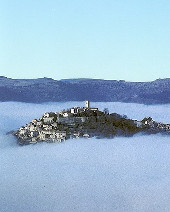
In the northern part of Istria, overlooking the Mirna River valley, lies surely the most famous and attractive Istrian medieval town of Motovun. This captivating hilltop town is one of the characteristic symbols of the Istrian interior.
Motovun is the perfect venue for a large number of events, the most significant among them is the International Motovun Film Festival that takes place at the end of July where world-known film artists may be seen. Motovun is also interesting for ballooning lovers, its favourable microclimate enables flying in balloons all year round, so that Motovun hosts several ballooning events.
Motovun Forest which stretches along the Mirna River valley is especially rich in truffles, the underground malodorous fungus believed to be an aphrodisiac. Istrian white truffles, whose season lasts from September to December are said to be as good as the finest Italian and French truffles. Opposite Motovun stands the charming picturesque town of Oprtalj, as well as Livade, famous for the Days of Truffles held every year from September to November. Every year in Livade, also known as the World's truffle centre, a special festival is organized with a contest of choosing the largest truffle.
Motovun is surrounded by vineyards from which the finest Istrian wines, white wine Malvasia and red wine Teran, are produced. The entire area is dotted with excellent local inns ‘konobe’ and restaurants. In close vicinity is also Istarske toplice, thermal spa with curative water.
Recommendation:
Grožnjan
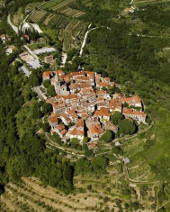
Situated on a 228-metre high hill above the Mirna valley, with horizon widly open towards Motovun and Mt Ucka, Groznjan is only 20 km away from the sea. Travelling to Groznjan by road,passing by terraced hills with vineyards and olive groves, visitors will notice that the sea,as though at an arm's lenght, disappears and then reappears but remains present throughout the entire journey. This is the route which was used by the unconquerable Histrians, then Roman soldiers...
The medieval urban core of Groznjan has remained untouched for the most part. Shiny tiled alleys, stone houses and arches decorated with coats of arms and inscriptions of nobles,balconies and eaves lure with their harmony and simplicity and hearken back to days of yore. Here, where the spirit of the past is free to grow... art is created. True lovers of this place and artists renewed the almost ruined houses , turned them into workshops, painter's ateliers, restauration studios,ceramic schools, galleries .Groznjan is promoted as the Town of Artist opened to art lovers from whole Europe.
After the fine arts led the way, making Groznjan increasingly popular, its quiet little streets needed a new breath of life.And this is when music appeared. At first, a few timid notes wee heard, but then the windows opened wide and the harmonious sounds flooded the streets. Thanks to the Musical Youth International Cultural Centre established here, many young people from Croatia, Europe and the whole world come here to learn from the best professors and instructors. Every summer courses are held for individual instruments,orchestra,ballet. and International Jazz festival. is organised , too. Not a day goes by during summer when there is not a concert or some other musical performance held in acoustic space in front of the Loggia,in the church, in the castle music hall, or in any other place out in the open.Love towards music can be felt at every step.
Poreč
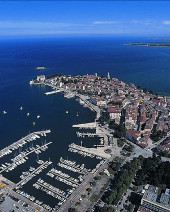
Porec is the winning town in Croatia when it comes to taking awards and certificates from National Tourist Organisation and media. The rich tourist tradition ( with the first hotel built in 1896.) and concern for guests is evident at every step.
But, Porec tourism is more than just sun, sea and a perfect tourist image. The city is still keeping its historical values which can be seen in the city centre. You can find museums, galleries in the most valuable city palaces, many of which are also homes for people ,as they have been for centuries. Some of our guests probably do not know that they are walking on the stone-tiled streets , built during Roman times. The remains of a forum and temples reveal that in Roman times, Porec was the fortified colony of Julius Parentium. One part of the city ramparts and towers is still prederved, in the Pentagonal tower there is a restaurant and in the Round tower- a pub.
The basilica of St. Euphrasiusis is the most beautiful and the best preserved monument of early Byzantine art dating from the sixth century with remains of the original, early Christian mosaic floors. The upper parts of the central apse are decorated with mosaics of exceptional artistic value and beauty. The Euphrasian Basilica is the crown of Istrian cultural heritage and is inscribed on the UNECSO World Heritage List.
Vrsar
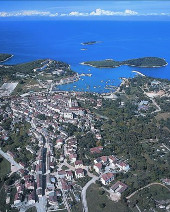
Visitors are enchanted by the beauty of this old fishing settlement which developed into a well-known tourist centre with the picturesque harbour. The town developed at the outlet of the Lim Bay. on the terraced hillsides overlooking the sea and archipelago of 18 islands of untouched beauty. Shady coves and beaches are waiting for those who love sun and sea, with or without bathing suits. A modern tourist complex has developed on the old town core dominated by the ruins of a castle, once a residence of Porec bishops. A sport airport is located in the vicinity where parachuting competitions are held and panoramic flights are organized.
Limski zaljev
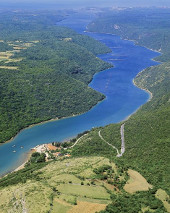
North of Rovinj, about a 20 minute car-ride away , one of the most beautiful natural resources of the Istrian peninsula, Lim Bay, is located, also known under the name of the Lim channel or the Lim fiord.
The water in the bay is partly brackish, because of its underwater sources of sweet water and it is thus suitable for the growth of plant and animal life and there is also a well-known fish and oyster farm (oysters, mussels, giltheads, sea basses.). All these delicacies can be tasted in two restaurants on the very coast of the bay.
The very name of Lim has its origin in the Latin word «Limes» (border), since as far back as during the Roman Empire the valley divided two of the Roman provinces at that time, the today's cities of Porec and Pula. Forty years ago, a movie about Vikings was made here, with Kirk Douglas in the leading role.
Closeby, Dvigrad is located, a small medieval town, which is certainly worth a visit.
Rovinj
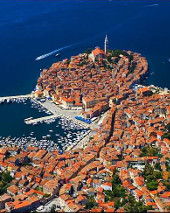
One of the most “photogenic” towns in the Mediterranean, once a fishing town, today is a tourist resort. At a distance of some 40 kilometres from Pula, Rovinj has long been known as the town with favourable and beneficial climatic features. So, today its people are still proud of this long tradition and “fight” for the title of “healthy town”... The rest is nature’s work. The entire coastline, with its twenty-two islands is an area of protected natural heritage.
Feel the enchantment of the town in its narrow medieval streets and warm Mediterranean setting. The main Church of St. Euphemia keeps relics of the saint and presents one of the most beautiful Baroque achievements in Istria. From the church plateau there is a wonderful view of the open sea and numerous islets in the distance. A visit to the Rovinj Town Museum and the town’s many galleries will complete your cultural experience.
Its surroundings offer immense possibilities for recreation: biking, horseback riding, jogging. But, owing to the sea and what it has to offer, ranging from sailing to discovering the underwater world, its therapeutic properties, today Rovinj is the destination for tourists from all over the world.
Bale
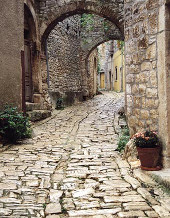
The town of Bale is situated at a height of 140 meters above sea level and lies at the intersection of roads leading to Rovinj, Pula and Trieste, only 5 kilometres from the sea. The town developed around the medieval castle of the Sardo and Bembo families in the 15th century and is mentioned in the earliest written documents as the Roman settlement Castrum Vallis. It is yet another typical Istrian town built on a hilltop with narrow streets and stone houses that create a special atmosphere. The town is dominated by the bell tower of the Parish Church of St. Julian, built at the end of the 19th century. The Bembo Palace has recently been completely restored, nearby is a fine example of a town loggia, whereas the town centre is under protection. At Colone Cove near Bale a very rich site of fossils belonging to several species of dinosaurs has been discovered.
Brijuni
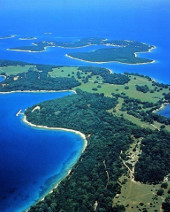
The Brijuni island group that lies off the southwest coast of Istria in the vicinity of Pula, was once the meeting place of the European and world jet set. As the only national park in Istria, Brijuni with its 14 islands covering an area of 736 square hectares presents a unique play of nature that brings together remarkable animal species and rare and rich flora all at one place. It ranks as one of the loveliest archipelagos in the Mediterranean.
Day by day the long forgotten splendour of the past from the beginning of the 20th century is slowly returning to Brijuni which is once again becoming the elite meeting place of the business world. Each guest knows that on this small, yet unique area there is a chance to enjoy the simple and often forgotten charms of nature – clean air, crystal-clear sea and untouched Mediterranean vegetation.
The islands can be reached by boat departing daily from the nearby fishing village of Fazana. Registration at the reception of the Brijuni National Park is required. Sightseeing tours of the archipelago by boats start as well from the Pula waterfront with longer or shorter stops in the Brijuni Islands waters.
Recommendation:
Pula
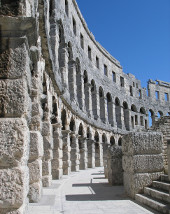
The largest town on the Istrian peninsula offers a diversity of attractions to lovers of culture. The rich itinerary of its three thousand year old history, where every step you take through the old town is a landmark, begins and ends with the Roman amphitheatre.
While strolling through Pula you will come across numerous monuments of Roman architecture: the Triumphal Arch of the Sergi from the 1st century B.C., Hercules’ Gate and Twin Gates, the Temple of Augustus, Arena and Small Roman Theatre in the town centre. A unique experience will be moments of relaxation in the main town square, which has managed to retain its role as the meeting place since the Augustan Age.
A great tourist asset is surely 190 kilometres of indented coastline, crystal-clear sea and beaches to suit everyone’s needs: smooth and even stone surfaces or pebbles for all generations, especially families with children or “secluded” beaches hidden by untouched greenery for those who want a bit of privacy.
Recommendation:
Vodnjan
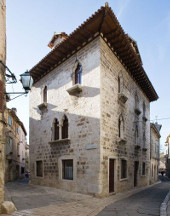
Nowadays, even though little has remained from its former splendor, it is interesting as a cultural and tourist destination. The old part of town has preserved many Gotic, Renaissance and Baroque buildings and palaces. The most interesting is the Bettica family Gothic palace, the popular “Kaštel” built around 1300 which today houses a museum.
One of the town’s highlights is the Parish Church of St. Blaise with its 63 meters high bell tower being the tallest in Istria. The church also keeps mummified bodies of saints and a collection of reliquaries. The neighboring village Barbariga is known for its remains of the Roman villa rustica with elaborate mosaics and also remains of oil production structure. Vodnjan is even nowadays known for its fine olive oil.
Svetivinčenat
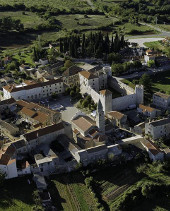
Situated in the southern part of central Istria,the medieval town of Svetvincenat, is one of those Istrian jewels that has been discovered only recently. It offers a variety of cultural events which take place on attractive historical sites of this town.
During the summer months the renovated medieval Morosin-Grimani castle becomes the venue for programs of Istraetnojazz festival, whereas the nearby magnificent central town square and surrounding areas are the stage for the traditional Festival of dance and non-verbal theater.
Svetvincenat also has its local art group which often organizes exhibitions, concerts and performances. At the end of autumn the Festival of new wine is held here, a chance for the best winemakers of Istria to present their new wines.
Labin
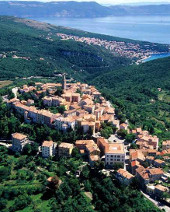
The medieval town of Labin is situated on the hill above Rabac. Its old name of Albona was first mentioned in 285 AD. The birthplace of Matthias Flacius Illyricus, the reformer and collaborator of Martin Luther, it is a cultural and administrative centre today. The rich cultural and architectural heritage of Labin is enlivened by number of art ateliers and by the bustling youth gathering in the coffee bars scattered around the old town. The Sculpture Park in nearby Dubrova features over 70 forma viva stone sculptures.
After a walk through the narrow streets of the Old Town, pay a visit to the Town Museum with its unique miniature coal mine. Have a look at the Memorial collection of Matthias Flacius Illyricus, peek into the art ateliers, enjoy the view of Rabac and Cres island from the Fortica or pop into the small, elegant shops and take refreshments on one of the terraces of the local coffee bars. Whether to do business or just to have a chat, these are the places where everyone meets.
Recommendation:
Rabac
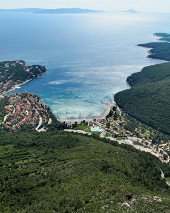
Today, Rabac is a well-known tourist resort. By the middle of the 19th century, it was a small fishermen village with hardly ten houses. Due to the beautiful bay and splendid, tame surroundings, it soon attracted first visitors. In 1876, Richard Francis Burton, an English writer and a passionate traveler, was among the first tourists who stayed in Rabac. Having seen Rabac and other places on the Istrian coast, he wrote a book of the same title 'The Istrian coast', describing, among other things, the beauties and charm of Rabac.
Brseč
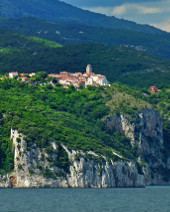
This is a medieval town of amazing stone beauty. Situated on 157 meters high cliffs overlooking the sea, this town, 20 kilometers from Opatija, represents the end of the Liburnia Riviera. From Brseč, enjoy the views of the islands of Cres, Unije, Susak as well as from Učka Mountain’s southernmost peak Sisol (835m), which can be reached by hiking trails. The town had a rich history and tradition, and some famous artists,nobles and priests came from this town. Even though, most of the inhabitants of Brsec once lived entirely from agriculture, wine-making, cattle-breeding and fishing , it is interesting to note that for the past one hundred years, this town has not had any illiteracy.
Mošćenička Draga
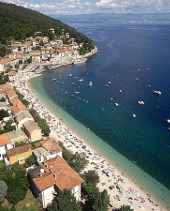
The number of inhabitants in the winter, at just under 500, increases several fold in the summer months, as this town lives for and from tourism. Just 15 kilometers from Opatija, this is the sight of one of the most beautiful pebble beaches on the Adriatic Sea. Even residents from the other maritime towns frequently travel the few kilometers to Mošćenička Draga to spend the day on this exceptional natural beach.
Mošćenice
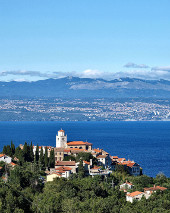
On the hill two kilometers above Mošćenička Draga lies Mošćenice at 173 meters above sea level. This town stands on the place of historical settlement of the Illyrian tribe Liburnia, after which the entire region was named (Liburnia Riviera). Due to the breathtaking views over the entire Kvarner Bay, Mošćenice is a favorite excursion place for numerous tourists, as well as a starting point for hikers and mountaineers on their way up the hiking trails to the old, abandoned villages (995m) on the Učka Mountain.
Opatija
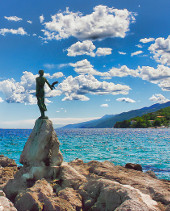
Opatija, this elegant tourist destination, lies at the centre of Riviera with the longest tradition of tourism in Croatia. The very attractive geographic position, the fact that it can be quickly reached from many cities of Central Europe (only about 500 km from Milan, Vienna and Münich), lush green scenery and a pleasant climate , were some of the main reasons for the beginning and the quick development of its tourism at the end of the 19th century.
Well-maintained public gardens, the illuminated 12-km-long coastal promenade known as the "Lungomare", well-kept beaches and fountains provide a stunning backdrop for the villas and hotels that cater comfortably for up to 6,000 guests.
Due to a relatively constant temperature (winter average 7.0 °C, summer average 21.9 °C), high air pressure and constant circulation of air, the climate in Opatija is relaxing and refreshing. The contrasts of sea and mountains, green parks and blue ocean, old buildings and modern comforts, noisy entertainment venues and quiet destinations for excursions all combine to make Opatija and its surroundings a very attractive tourist resort at any time of the year.
